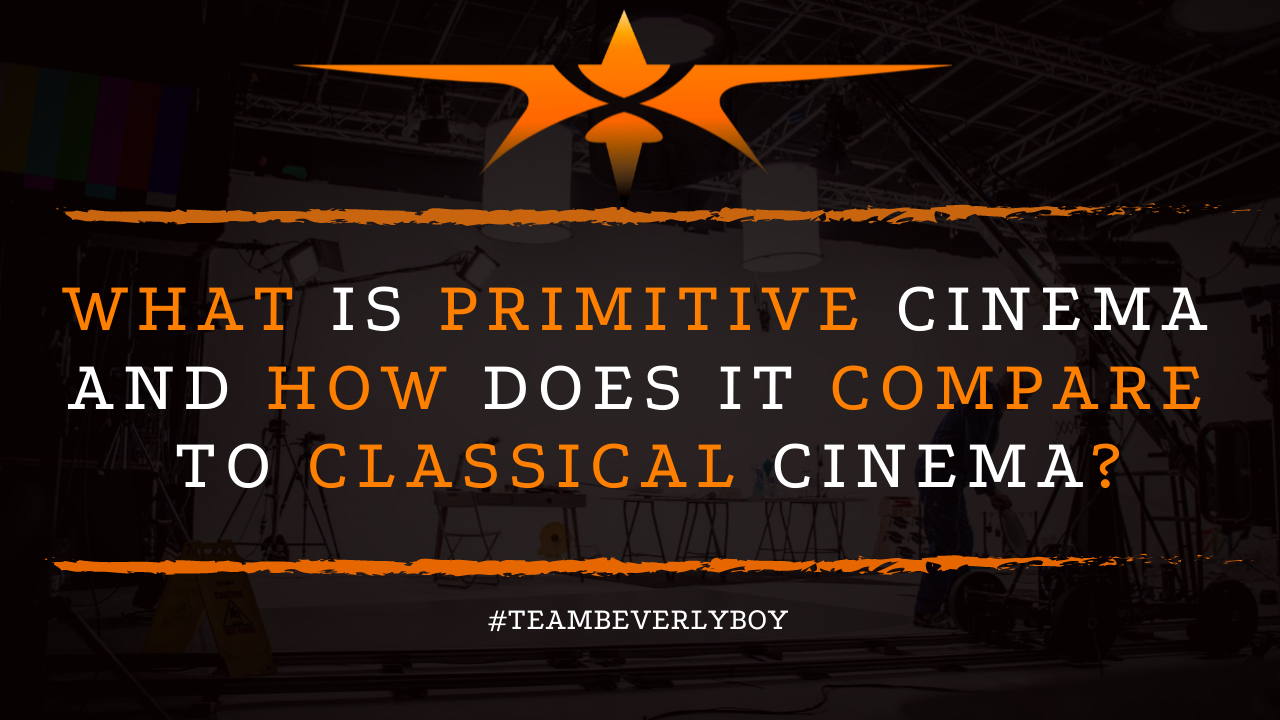
What is Primitive Cinema and How Does it Compare to Classical Cinema?
You might hear the term “primitive cinema” floating around in discussions about early period films from the early 1900s and even a bit prior. Early cinema, particularly the period of international film history from the 1890s to about 1915, represents the mere emergence of motion picture films and the establishment of institutionalization of narrative feature filmmaking for the purpose of mass viewing and production. So what is primitive cinema? This early period can only be understood by a review of the history.

What is Primitive Cinema?
Primitive cinema represents a unique period of early film development which took place between 1894 and 1908.
During this time, the types of films that would be most appealing to audiences were generally those of topical subjects, tricks and effects, comedy, melodrama, and novelty.
Which was purely that associated with photographic movement.
A Foundation
As people just began recognizing patterns and abilities in the creation of moving photography.
Primitive cinema would really form the foundation upon which classical cinema would take over. Early primitive cinema placed the film’s spectator distanced from the action occurring.
Thus films from this period utilized fixed camera positioning, generally shot at long distances.
Intertitles
Because primitive cinema was filmed from a stationary camera that was positioned a distinct distance away from the scene.
Audiences often struggled to see details or distinct elements of the scene. Thus intertitles were used to deliver important details that could not be captured from the fixed lens position.
Or distance and actors would use extreme gestures and movements. As part of their narrative style to deliver the emotions and details of the story on film.

How Does Primitive Cinema Compare to Classical Cinema?
As we look to answer the common question, “What is primitive cinema?” we also dive in a bit further in examining how primitive cinema compares to classical cinema.
Both of these represent periods of early cinema. Although primitive cinema is clearly the earlier period spanning between 1894 and 1908. Whereas classical cinema spans from 1908 to 1930.
Certainly there were a lot of major shifts in filmmaking during that timeframe, specifically, classical cinema would see:
- Changes in camera movement.
- Changes in camera distance bringing the camera closer to the scene so that spectators could experience more.
- A reduction in the overall use of intertitles as actors would begin speaking and acting scenes out in films with sound.
- The introduction of individualized characters which would become profound elements for spectators to connect with and understand.
- Advances in the complexity of relationships built within the stories that were contained in films.
- A reduction in the use of overpowering or otherwise elaborate gestures by actors in order to convey the general narrative (actors could now speak on camera and be seen).
In Summation
While primitive cinema certainly has its place and was responsible for a variety of achievements.
We can definitely see why the shift from primitive cinema to classical cinema was so profound and equally so important.
Likewise, classical cinema which would seem so incredibly powerful for its time would also eventually be obsolete just as the primitive cinema that led us into the classical experience.


